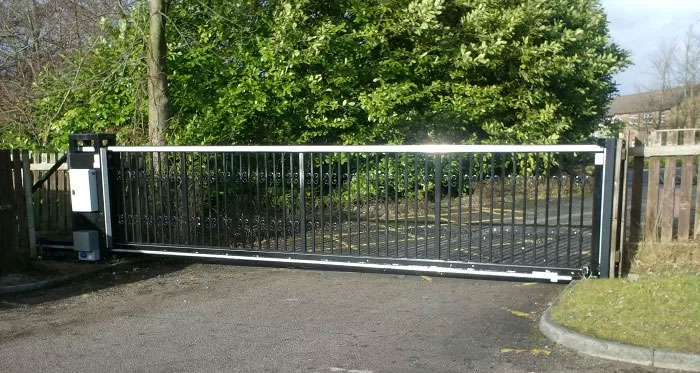Powered gates and barriers are becoming an increasingly common part of security at many commercial premises and are rising in popularity in both colleges and schools. Traditionally powered gates and barriers were used only in commercial/industrial environments and at high net worth homes, however they are now regular features of school security.
The risks of poor installation and maintenance
Ensuring gates/barriers are safe and well maintained is essential in an educational environment and correctly installed powered gates are a great security improvement. However the health and safety risk from below standard installations and poor maintenance should not be under-estimated.
It has been reported that from 500,000 automated gates in the UK, only 30% are correctly installed and maintained safely.
In recent years, accidents caused by gates whilst in motion or from poor installation/maintenance have resulted in a number of serious injuries and even death. Therefore, maintaining gates and barriers is paramount to avoid the risk of injury, especially in schools where children could be at risk.
How to check if your powered gate is safe
Consistent and thorough checks are essential to ensure that any security installations are functioning as intended. It is often the lack of these checks that leads to the gate/barrier malfunctioning and causing serious injury to pedestrians or staff coming in and out of schools.
When checking schools security gates or barriers for safety, please consider the following points:
-
Do the sliding gates or barriers protect all areas from unauthorised access?
The main feature of any security installation is to create a safer environment. As such the first check should be that the gate or barrier is installed as desired in order to give the extra security it is designed to provide. This means checking that all restricted areas are protected by the gate or barrier and that any extra features like keys or alarms are functioning as intended to ensure that only authorised staff can get through.
-
Is the gate or barrier fitted with the correct safety features to cause it to stop or reverse when it hits an obstruction?
This is perhaps the most important question as ensuring that a gate can recognise when it has reached an obstruction and take action to avoid it is key to prevent damage or injury to staff and any vehicles or structures. This step means making sure that any ‘safe edges’ or detectors are fitted properly and working as they should. You can see one of our powered gates in action in this video of a recent safety test we carried out on one of our products.
-
Does the owner or operator know how to put the gate into manual operation in case of emergency?
Ensuring that the owner or operator of the gate or barrier knows how to operate the product in cases of emergency is just as important as properly maintaining the features and accessories fitted to the gate or barrier itself. Therefore it is important to make sure that sufficient training and knowledge is provided where necessary to try and avoid any extra risk.
If you are unable to answer any of these questions, you risk being liable for an unsafe gate should anything go wrong.
For more information on correct safety and maintenance or to talk to us about our servicing and maintenance packages, please contact the team at Newgate today on 0808 156 1561.


